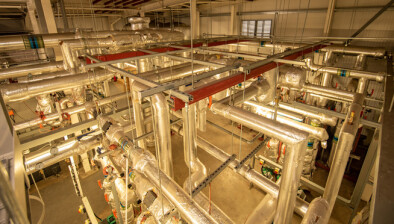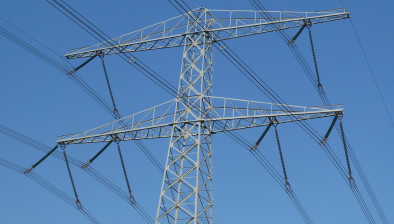Scotland outperforms UK in reducing emissions, report finds
 Scotland continues to outperform the rest of the UK in reducing its greenhouse gas emissions, but successful strategies for energy and waste mask a lack of progress in other parts of the Scottish economy, a new report has concluded.
Scotland continues to outperform the rest of the UK in reducing its greenhouse gas emissions, but successful strategies for energy and waste mask a lack of progress in other parts of the Scottish economy, a new report has concluded.
The Committee on Climate Change’s (CCC) 2018 Progress Report to the Scottish Parliament shows that Scotland is performing well as total emissions fell by 10% in 2016, compared to 2015. The lion’s share of this latest drop in emissions came from electricity generation, but following the closure of Scotland’s final coal plant, Longannet, the report concludes that Scotland’s strategy must now move on decisively.
The Scottish Government’s new Climate Change Bill sets an ambitious target of reducing emissions by 90% by 2050 compared to 1990 levels. The committee’s new report shows that the 2020 interim target of reducing emissions by 56% on 1990 levels is now within reach. The Scottish Government’s Climate Change Plan is an ambitious statement of intent and improves on the draft plan presented in 2017. The Committee also commends the new Energy Efficiency Scotland Routemap. Nevertheless, achieving the 2050 target is only possible when effective policy extends to other sectors of the Scottish economy, where emissions are flat or rising.
Transport is now Scotland’s biggest sectoral challenge. Emissions from transport have increased each year since 2010, with a further 2% increase overall in 2016. The Scottish Government announced last year an ambition to cut emissions from road transport – phasing out petrol and diesel vehicles by 2032 – but it’s unclear how these policies will deliver a more rapid transition than the rest of the UK. Emissions from agriculture, forestry and land use also present substantial challenges; relying on voluntary measures for agriculture as well as uncertain funding for targets for tree planting and peatland restoration.
The CCC’s new report finds that:
The committee will consider the appropriate level of emissions reduction for the UK under the Paris Agreement, following a request expected from the UK Government in October. As part of this, it will consider how this updated advice affects Scotland’s emissions targets and policy action.
Lord Deben, chairman of the Committee on Climate Change, said: “Scotland continues to lead the UK in reducing its emissions and has ambitious targets which aim to go further. Decarbonisation of Scotland’s electricity sector, and reductions in emissions from waste, have seen Scotland outperform the UK overall as emissions continue to fall year-on-year to nearly half of 1990 levels.
“The Scottish Government has made some progress on tackling issues raised in the committee’s report in 2017. However, challenges remain. Achieving a 90% cut in emissions by 2050, as envisaged within the new Climate Change Bill, means greater effort is now required across other areas of Scotland’s economy. This includes policies to drive down emissions in sectors where they are either flat or rising, such as transport, agriculture and energy efficiency in buildings.
“Without real action in these areas, Scotland may fall short of its long-term goals.”
Scottish Renewables welcome the report and backed the committee’s call for greater clarity.
Fabrice Leveque, senior policy manager at Scottish Renewables, said: “It’s great to hear that Scotland continues to lead the rest of the UK in cutting harmful carbon emissions, thanks in large part to our renewable electricity sector.
“However, we agree with the committee’s view that more clarity is needed from the Scottish Government on how it will accelerate the integration of both cleaner heating in rural areas and large-scale heat networks in cities.
“Scotland’s low-carbon heating sector faces an uncertain future and we urge the Scottish and UK governments to work together to find a solution.
“Similarly, to ensure that the great strides made in decarbonising electricity generation to date are maintained and continue into the future, government policies must be joined up across departments and aligned with carbon targets.”









